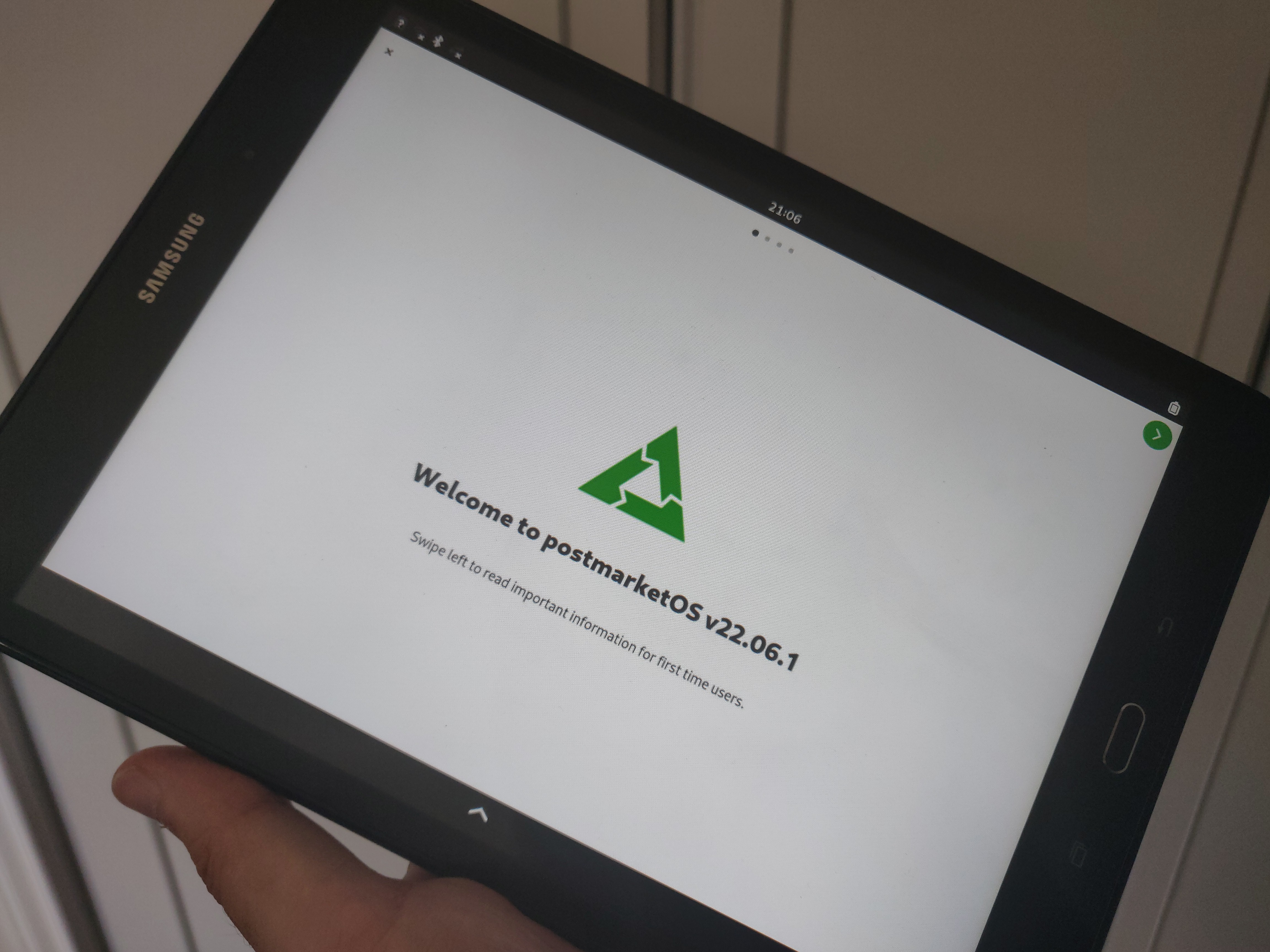Samsung Galaxy Tab 9.7 and postmarketOS: initial impressions

I have wanted to replace my iPad with a Linux-based device for a while so, when I saw that postmarketOS ran on the Samsung Galaxy Tab 9.7", from 2015, I was keen to give it a go.
I found one on eBay for the seemingly reasonable price of £50 delivered, so I took a punt.
(I love the idea of breathing new life into old(er) devices, in addition to wanting more control over what my device does (and does do).)
Installing postmarketOS
I installed postmarketOS on the Galaxy Tab from a machine running Linux.
The official instructions were almost correct and complete.
Here’s what I did:
- Download lk2nd-msm8916.img from Releases page on Github.
- Boot your phone to bootloader (download) mode by holding Volume Down and Home while powering up and then press the Volume Up button.
- Follow lk2nd instructions to install lk2nd. Basically flash it to boot partition (
heimdall flash --BOOT lk2nd-msm8916.img) - Follow Qualcomm_Snapdragon_410/412_(MSM8916)#Installation to install postmarketOS.
- I installed
fastbootfrom the Debian repos (apt install fastboot -y). - I am using the Phosh image; I might try the plasma image next
- I installed
The installation completed in about six steps.
Basically, it was very easy. What I was expecting to be an evening’s project took about 10 minutes.
Initial impressions
I’m used to Debian-based Linux, so postmarketOS is (under the hood, at least) rather unfamiliar to me. I’d prefer a Debian-based environment, to be honest, but oh well.
My initial impression is that I am sceptical it is an iPad replacement, but that I reserve my judgment.
Wi-Fi connected without a hitch. I have not tried WireGuard yet.
The Galaxy Tab’s screen is of a noticeably lower resolution than my iPad. But since my iPad was a 2019 model (I think), and the Galaxy Tab is from 2015, that’s no surprise.
It is also no surprise that the Galaxy Tab is slow. But is it too slow? Perhaps. There’s a noticeable lag when launching software, but, when launched, it is not so bad.
I have installed:
- cawbird, as a Twitter client (so far, so good)
- Tootle, as a mastodon client (so far, so good)
- Gnome Reader, as an RSS client (no good for my needs; I need something to log into FreshRSS)
- the Bitwarden plugin to Firefox. It’s not a great experience, but it does - sort of - work
Note that charging does not work once you’ve booted the device. If, however, you plug it in while it is off, it does then work.
Next steps
I want to give jellyfin a try, but I am not optimistic.
I need to find a better (for my needs) RSS reader.
Since I have flashed an image, I do not have full disk encryption in place. Given that I don’t intend to store personal data, or anything sensitive on there, this is not terrible, but I’d prefer it was full disk encrypted all the same. So that might be something for me to work on. Update: I did, and it works flawlessly.
You may also like:
- Microsoft Surface, Debian, and two 4k monitor frustrations
- A year with password manager bitwarden
- Transfer your computers clipboard to a camera-enable mobile device via QR code
- Fixing 'tee: command not found' on Debian 11 Bullseye
- GNOME display fractional scaling
- Installing Debian 11 on a Microsoft Surface Go: secure boot, mokutil, Wi-Fi, and libinih1
- PinePhone: WireGuard, dns-over-https, and other thoughts
- Setting up a Ledger Nano X with Debian 11
- Quick Image Montages
- RSS feeds for Internet tech, policy, and legal stuff (and some other bits)
- Virtualising an existing macOS installation for VirtualBox on Debian 11